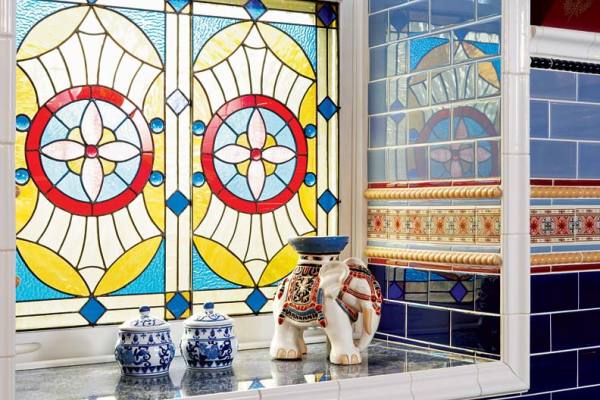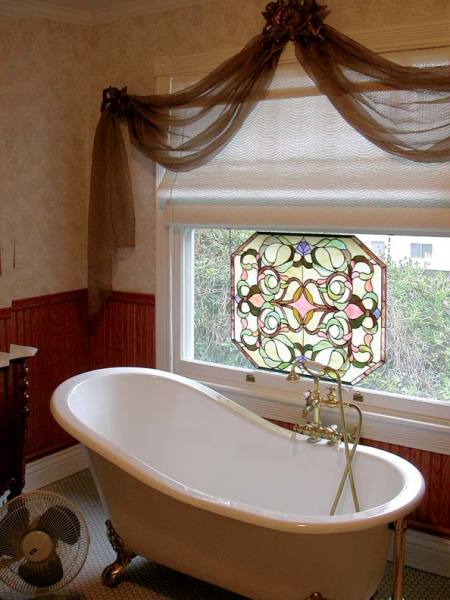A custom-made stained glass window in a Chicago townhouse bathroom maintains privacy and light while adding color. (Photo: Jessie Walker)
Even if you do all of your dressing in a dark closet, it’s a good bet that there’s a room or two in your home where privacy is paramount. Even in the famous Glass House, architect Philip Johnson did indeed shield the bathroom from view.
Luckily, some of the most ingenious window coverings for protecting privacy are rooted in history. The Venetian blind may instantly bring to mind Sam Spade peering out a San Francisco office window in the 1941 film The Maltese Falcon, but these familiar wood-slat devices began appearing in America as early as the 1760s. Earlier still is the interior shutter, versions of which appeared in colonial America in the 1600s. Bifold shutters that folded flat against a deep window casement or slid into pockets were popular during the Greek Revival era of the 1830s and 1840s and are a good choice in homes built before 1850. Since interior shutters remained popular until the 1880s, they’re also appropriate for many styles of Victorian houses, from Italianate to Queen Anne. So, too, are roll-up blinds, which appeared in the United States soon after the War of 1812.
 While a stained-glass panel offers a jolt of bright color, a roller shade from
While a stained-glass panel offers a jolt of bright color, a roller shade from
But the biggest innovation in the realm of the private window in the last half of the 1900s was decorative and pattern glass. While delicate etched or wheel-cut patterns adorned glazed panels in double front doors on Neo-Grec or Second Empire row houses, the most familiar forms of 19th-century privacy glass are probably glue-chip and pattern glass, which are inexpensive to produce. Glue-chip has a pattern that resembles an icy frost; pattern glass can be ribbed, dimpled, or figured with a design. Recently, pattern glass once again has become more widely available, and although some patterns are thoroughly contemporary, others are dead ringers for glass made a century or more ago.
Leaded-glass windows with clear or colored glass were popular in homes built from the 1880s through about 1920, appearing in entry doors, foyer windows, and in dining rooms. Many artisans still make all kinds of traditional decorative and leaded glass, of course; it’s also possible to use salvaged stained-glass panels to screen a bathroom window, or to incorporate in a remodel. Probably no other practical art form has done so much to bring beauty and privacy into the American home.
For sources, see the Products & Services Directory.







